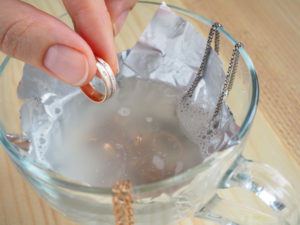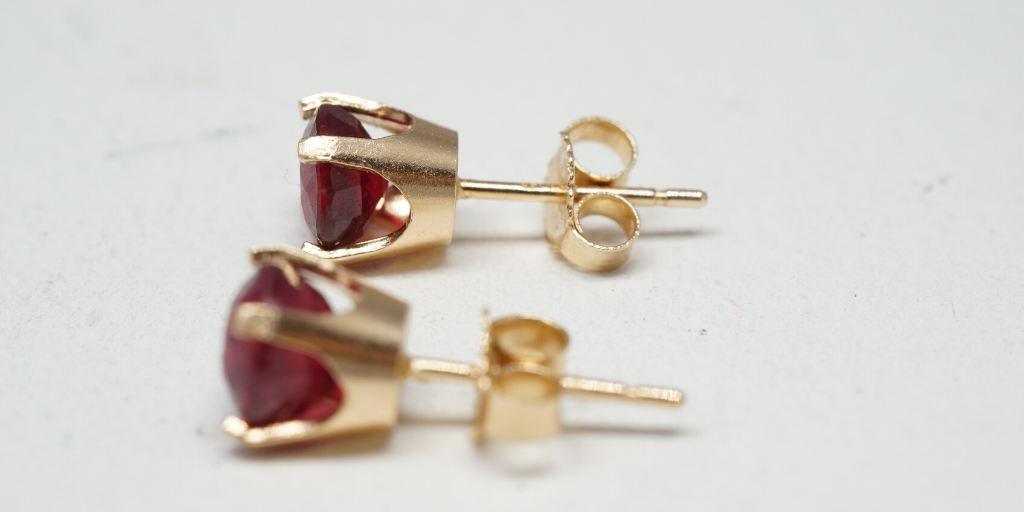Jewelry Cleaning Myths Debunked: Separating Fact from Fiction
Written by Anna Currell
May 18, 2023

Keeping your jewelry clean is essential to ensure it maintains its shine, luster, and longevity. However, with so many different methods and tips available — many of them contradictory — it can be hard to know what really works and what doesn't. In this article, we'll be debunking some of the most common jewelry cleaning myths to help you separate fact from fiction. Let’s dive in!
Myth #1: Toothpaste is an Effective Jewelry Cleaner
One of the most pervasive jewelry cleaning myths is that toothpaste can be used to clean your jewelry. However, while toothpaste might help remove some stains from your teeth, it's not a good choice for cleaning jewelry. Toothpaste is abrasive and can scratch the surface of softer gemstones and metals, causing permanent damage. Instead, use warm water with dish soap or take your jewelry to a professional for expert cleaning.
Myth #2: Soaking Your Jewelry in Water is Safe
Another common misconception is that soaking your jewelry in water is safe. However, this can be damaging to certain types of jewelry, especially those that are porous, like pearls and opals. Prolonged exposure to water can cause these materials to become discolored or even crack. It can also erode metals over time and lead to tarnishing. Instead, use a soft, damp cloth to gently clean your jewelry, dry your pieces thoroughly, and avoid soaking them in water.
Myth #3: Ultrasonic Cleaners are Safe for All Jewelry
Ultrasonic cleaners are a popular choice these days, but they're not safe for all types of jewelry. They can damage certain metals and gemstones like emeralds, opals, and pearls. Additionally, the sound waves they use can loosen or dislodge prongs, causing stones to fall out of their settings completely. If you're unsure whether it’s safe to clean your jewelry with an ultrasonic cleaner, it's best to err on the side of caution and avoid using one.
Myth #4: Wearing Your Jewelry in the Shower is Okay
Many people believe that wearing their jewelry in the shower is safe, but this is another common misconception. Soap and shampoo can leave a film on your jewelry, making it appear dull and lifeless. Additionally, exposure to water and steam can cause certain gemstones to become cloudy or discolored over time. To keep your jewelry looking its best, it's best to remove it before showering or bathing, or apply a transparent e-coating to make your pieces waterproof.
Myth #5: You Can Treat all Types of Jewelry the Same Way
Finally, it's important to understand that not all types of jewelry can be cleaned or treated with the same method or the same tools. Different gemstones and metals require a different approach to cleaning in order to effectively avoid damage or discoloration in the process. Here are some helpful tips for how to clean jewelry made of specific materials:
- Gold-plated jewelry: The safest cleaning method for most jewelry is to use a soft cloth and a gentle dish soap in warm water. Follow this method for gold-plated jewelry; since gold-plated jewelry has a thin coating of gold, it’s easier to wear away than solid gold. Don’t let your gold-plated jewelry soak in water and always be sure to avoid using abrasive materials or harsh chemicals, as they can damage the plated layer. If the gold plating is starting to wear away, consider having it re-plated by a professional jeweler.
- Pearls: Pearls are delicate and require special care when cleaning — never use an ultrasonic cleaner for pearl jewelry. Soaking pearl necklaces or bracelets that are strung together or knotted can weaken the string. Also, be sure to avoid exposing your pearls to heat as it can cause them to crack.
- Enamel: Enamel is a special material made from powdered glass fused to a base metal. Enamel jewelry can be cleaned with a soft cloth and a mild soap solution. Be careful to avoid using abrasive materials or harsh chemicals, as they can scratch or damage the enamel. If your enamel jewelry is particularly dirty, consider taking it to a professional jeweler for a deep cleaning.
- Silver: Silver jewelry can be cleaned with a silver polishing cloth or a specialized silver cleaner. If your silver jewelry is heavily tarnished or particularly intricate, consider taking it to a professional jeweler for deep cleaning and expert polishing.
In addition to regular jewelry cleaning, it's important to store your jewelry properly to prevent damage and tarnishing. Avoid storing your jewelry in humid or damp environments, and keep it away from direct sunlight or extreme temperatures.
By following these tips, you can keep your jewelry looking its best for years to come. Remember to be gentle when cleaning your jewelry, avoid using harsh chemicals or abrasive materials, and take care to clean each piece according to its specific needs. If you're unsure about how to clean a particular piece of jewelry, it's always a good idea to consult a professional. The experts at Quick Jewelry Repairs can give you advice on the best cleaning methods to use, alert you to any potential risks or concerns with your jewelry, and provide top-notch jewelry spa services.





